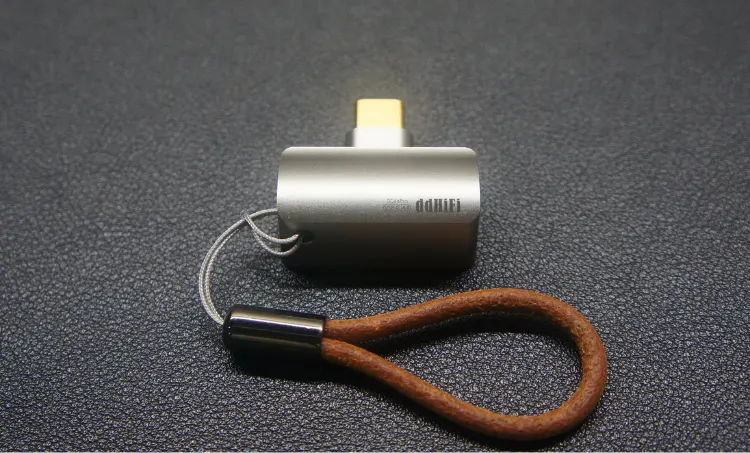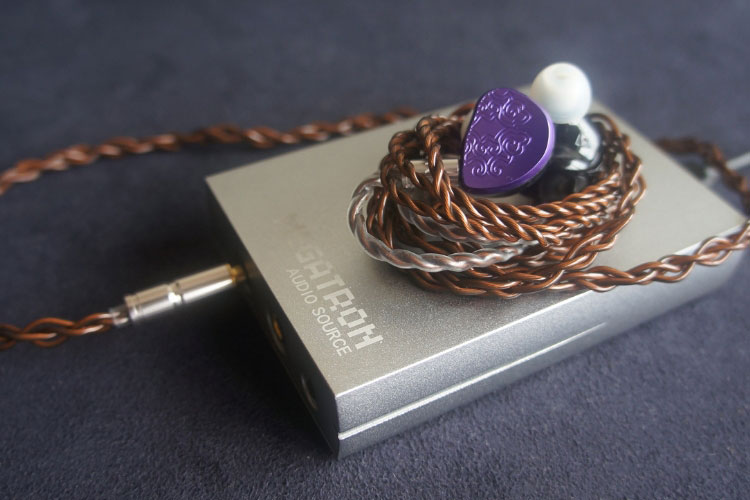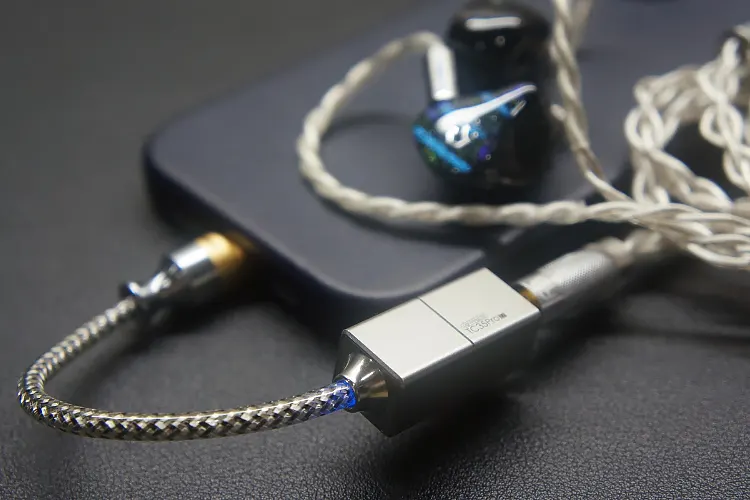Select Comparisons
ddHiFi TC44Pro
Technical
Both the origins TC44Pro and the E2 make use of the same DAC layout of dual Cirrus Logic CS43131 DAC Chips. These chips are capable of decoding up to PCM 32BIT/384kHz and up to DSD256.
Both units come with either lightning or USB-C inputs, as well as a single 4.4mm BAL output. Through this balanced out, the original TC44Pro can output up to 120mW@32Ω, whilst the E2 can output up to 250mW@32Ω.
Design
Both dongles make use of different form factors but use the same CNC machined aluminum and brushed finish that ddHiFi is known for.
The original TC44Pro houses all its electrical components and I/O in one piece of metal, with no external cables.
In contrast, the E2 houses the DAC/AMP chips and the 4.4 output in the main metal body, while a high-quality attached cable connects it to the input connector on the other end.
Coming in at just 9g and 30x18x12.5mm, the original TC44pro is substantially smaller and lighter than the 60x20x10 mm and 20.7g E2.
Performance
The tonality and sound signature of the original TC44Pro and the TC44Pro E2 are quite similar, with the E2’s improvements mostly being technical ones. Both dongles have a cold and somewhat analytical tonality, but the TC44Pro E2 adds more energy and texture.
The bass on both dongles is similarly tight and punchy without being overbearing, never bleeding into the mids, or adding any additional warmth.
However, the E2 can play back percussive instruments with better texture and decay. Each drum hit feels more realistic and musical. The sub-bass hits deeper on the E2, contributing to a stronger “chest-rattling” sensation.
The mid-range between the two dongles is presented similarly, with the main difference being the improved string instrument resolution of the E2. When performing A/B comparisons between the 2 units, the improved electric guitar resolution immediately stands out.
With both dongles having a cold tonality with top-end energy, the main difference once again lies in the resolution.
The difference in resolution I noticed in the treble was to a lesser degree than the one I noticed in the mids and bass, but it was still observable. When using the HD580, I noticed that the E2 did introduce more treble energy.
The E2 has a more intimate sound stage than the original TC44 pro, making vocals come off as more personal and in your face. The E2 also has improved imaging capabilities when compared to its predecessor.
Venture Electronics Megatron
Technical
The Megatron and the TC44Pro E2 utilize different DAC configurations. The TC44Pro E2 employs dual CS43131 DAC chips, whereas the Megatron relies on a single, slightly older, ESS9018K2M DAC Chip.
In terms of decoding capabilities, the Megatron can only handle files up to PCM 24-96, whereas the TC44Pro E2 can decode up to PCM 32BIT/384kHz and DSD512.
Dubbed a “Mega Dongle,” the Megatron offers a more extensive range of I/O options, featuring a 3.5mm SE output, both 2.5mm and 4.4mm balanced outputs, a 3.5mm Line out, and a single USB-C female port for input.
To ensure a fair comparison between the two, I exclusively evaluated the TC44Pro E2 against the 4.4mm balanced output of the Megatron. The Megatron outputs 320mW @32Ω, while the TC44Pro E2 delivers 250mW @ 32Ω.
The TC44Pro E2 has simpler I/O with a single USB-C or Lightning male connector for input and a single 4.4mm balanced jack as its sole output.
Design
The Megatron truly pushes the boundaries of what can be considered a “dongle.”
Enclosed within a robust metal frame with a sleek anodized finish that gleams under specific lighting angles, its form and dimensions resemble more closely those of a portable DAC AMP unit, such as the Fiio Q11, rather than a typical dongle.
The TC44Pro E2 is closer to what one would expect from a dongle. The E2 comes in at 60x20x10 mm with a 9cm attached cable.
All the electronics, as well as the E2’s 4.4mm out, are housed in the metal body, which is connected to the lightning or USB-C input via the high-quality attached silver cable.
Performance
I initially started my comparison by plugging in the 4.4mm plug of my Moondrop Blessing 3 to the TC44Pro E2, and to the corresponding plug on the Megatron.
I immediately heard a background hiss on the Megatron, even when no audio was being played. Playing back any kind of audio did not remove the hiss, making the listening experience with the Blessing 3, MP145, and Yanyin Cannon 2 unbearable.
However, this was to be expected since VE themselves claim that the Megatron is not designed for IEMs, explicitly warning potential buyers that hiss and noise may be experienced when pairing with IEMs.
Thus, my comparison was done with my Sennheiser HD 580. Right away, the TC44Pro E2 showed a much wider sound stage, while also effortlessly delineating each instrument within a mix with absolute clarity.
By every metric, the Megatron was superior to the TC44Pro E2, in terms of tonality, technical performance, staging, and imaging.
The TC44Pro E2 occasionally blurred instruments on the higher frequencies. The horns and chimes that started to distort and sound painful on the E2 were perfectly crisp and bodied once I plugged in the Megatron. Bass notes had significantly more punch and slam, making the TC44Pro E2 sound outclassed.
Even though the Megatron handily beat the TC44Pro E2, I still view this as a step in the right direction. The previous TC44Pro sounded significantly thinner and more fatiguing when powering the HD580.
So, perhaps the third or fourth iteration of the TC44Pro line will be able to catch up with the Megatron in powering full-sized headphones.
ddHiFi TC35 Eye 2
Technical
Both the TC44Pro 2 and the TC35Pro Eye2 make use of the same DAC chip, the CS43131 DAC. However, the TC44Pro 2 makes use of dual CS43131 DACs, while the TC35Pro 2 just makes use of one.
As a result, both dongles possess identical decoding capabilities, capable of decoding up to PCM 32BIT/384kHz and up to DSD256.
Both models are available with either a Lightning or USB-C male termination. The TC44Pro E2 has a sole 4.4mm balanced output, whereas the TC35Pro 2 offers a single 3.5mm SE port.
Through its balanced output, the TC44Pro 2 can deliver up to 250mW @32Ω, while the less powerful TC35Pro 2 can only drive up to 65+650mW @32Ω.
Design
With both dongles coming from ddHiFi and making use of the same construction style, both units are quite similar.
Both dongles have most of their electronic components housed in the main metal body. The TC35Pro 2’s body has the shape of a rectangular prism, whilst the TC44Pro E2’s body has an elongated Eye shape.
Both dongle bodies are connected to their sole input via an attached silver wire. Similarly, both dongles come with either USB-C or Lightning input.
Performance
For a fair comparison, when evaluating the Hidizs MP145 and Moondrop Blessing 3, I used the BQEZY Winter Ultra cable, equipped with detachable 3.5mm and 4.4mm connectors. The 3.5mm connector was used for testing the TC35Pro 2, while the 4.4mm connector was employed for the TC44Pro E2.
The sonic profiles of the TC44Pro E2 and TC35Pro 2 are notably similar, largely due to the utilization of the same DAC chip. Both dongles exhibit a neutral yet cold tonality, however the TC44Pro was significantly more resolving and less sibilant.
Compared to the TC44Pro E2, the TC35Pro 2 had a slight emphasis in the mid-bass, however, the TC44Pro E2 was able to play back tones across the bass region with more texture and slightly better note weight.
The balanced dongle was also capable of hitting deeper, being more adept at giving me a chest-shaking sensation.
The tonality of the mids was quite similar between the 2 dongles, with the balanced dongle presenting vocals in a more forward manner, whilst also playing back-string instruments such as pianos and violins with a much higher degree of resolution and technicality.
The treble is where the TC44Pro E2 differentiated itself from the TC35Pro. The first thing that stood out to me when comparing the TC35 was how sibilant, compressed, and fatiguing its highs were, especially in cymbals and horns.
The complex brass instruments that the TC35 was meshing together in a harsh mess were played back with ease and sparkle through the TC44 Pro E2.
Our Verdict
The ddHiFi TC44Pro E2 is a versatile dongle DAC with a neutral tonality, that plays back audio tracks with very good resolution, tone weight, and texture.
It doesn’t come without its flaws. Despite its listed 250mW power output, in practice, it isn’t much more powerful than the previous TC44Pro. It did a better job at powering full-sized headphones, but it was still lacking some power.
With its combination of exceptional dynamics, lightweight construction, and high-power output for a dongle, the TC44Pro E2 emerges as an appealing choice for audiophiles while harder-to-drive IEMs or easier-to-drive headphones looking for a way to drive them on the go.
ddHiFi TC44Pro E2 Technical Specifications
- DAC Chips: Dual Cirrus Logic CS43131
- Op-Amp Chips: Dual ES9603Q
- Output(s): 4.4mm Balanced
- THD+N <0.0004% @1kHz
- Output Power: 250mW @32Ω






